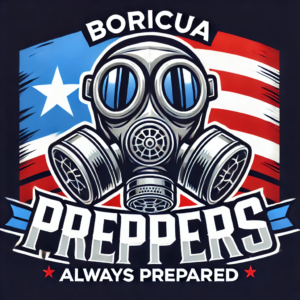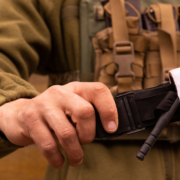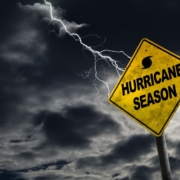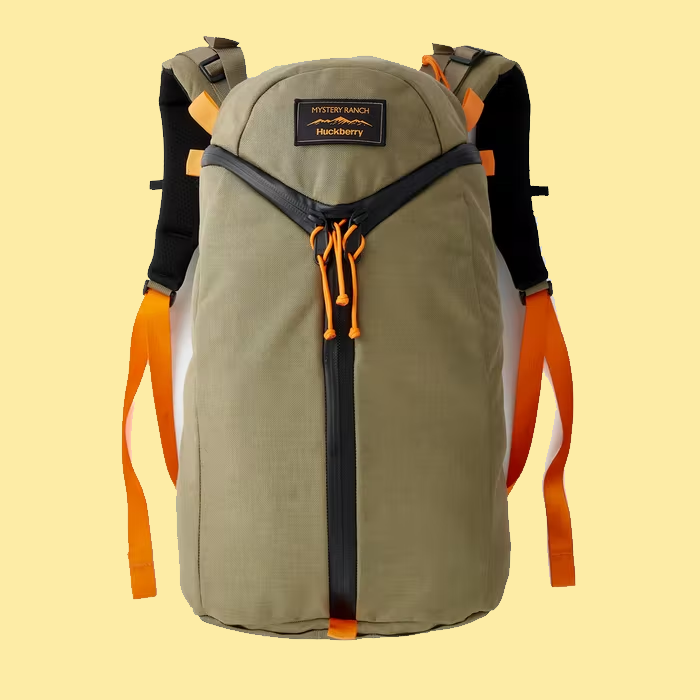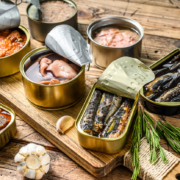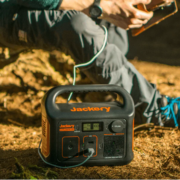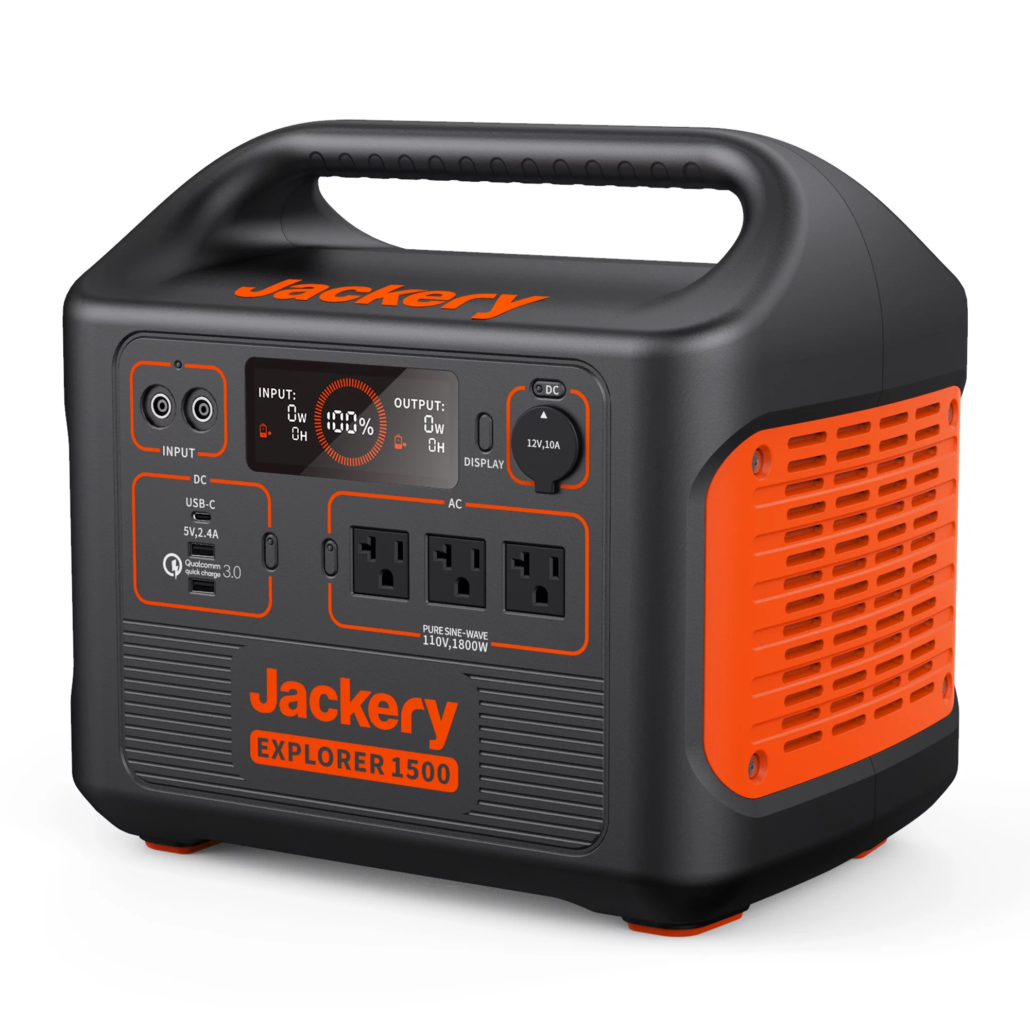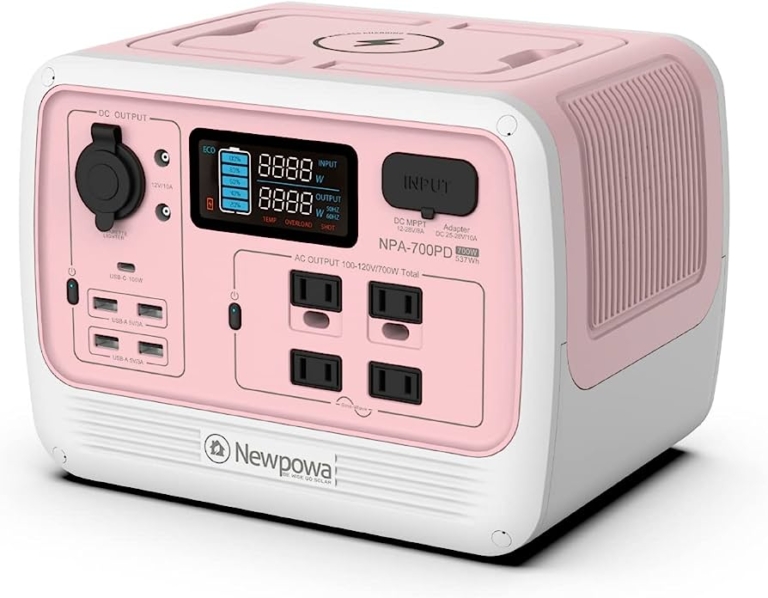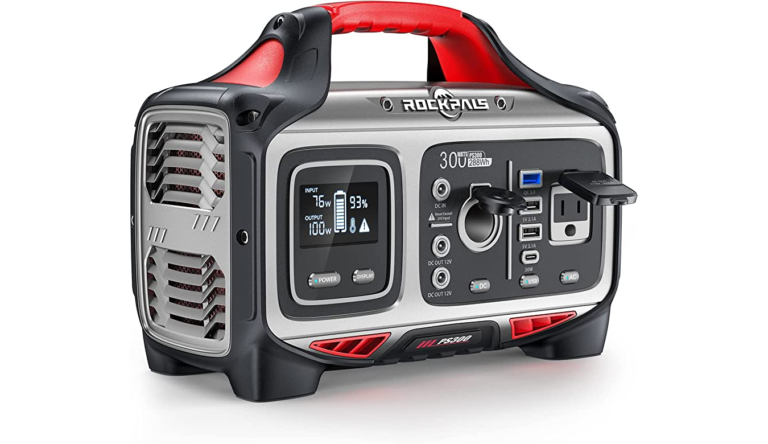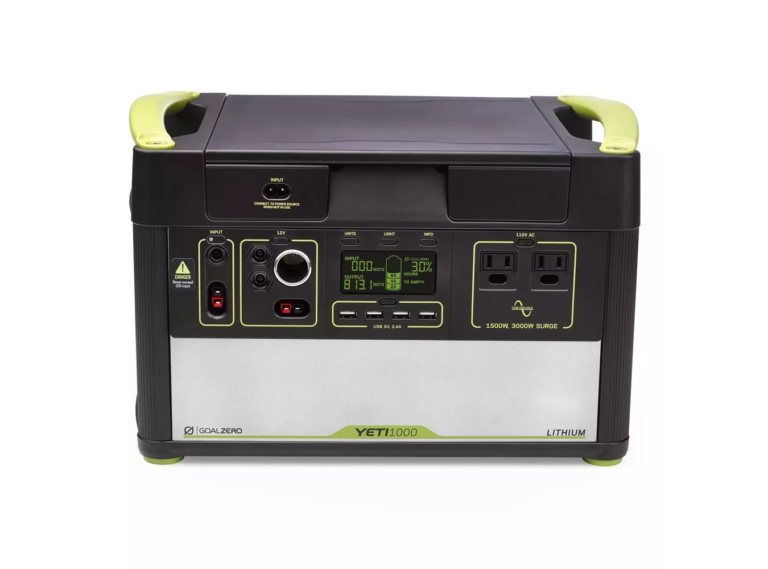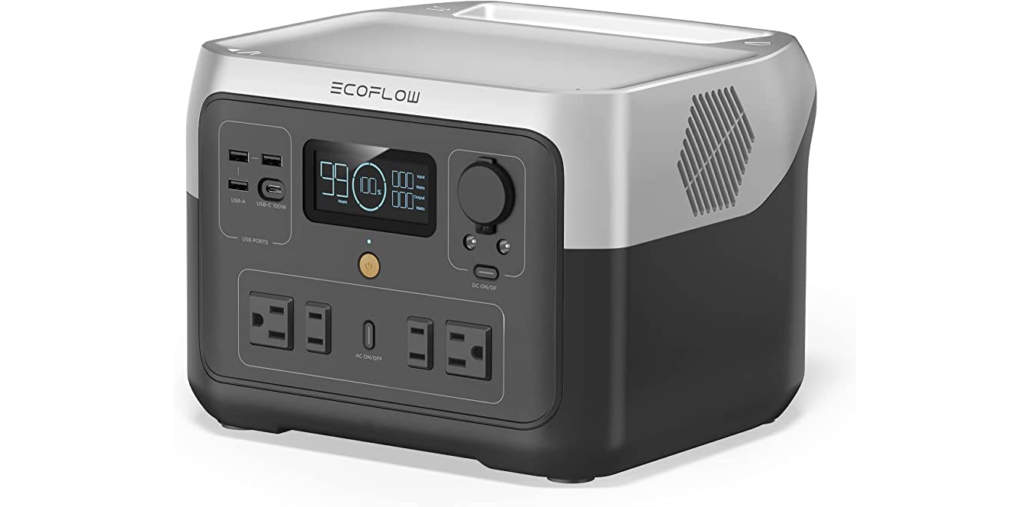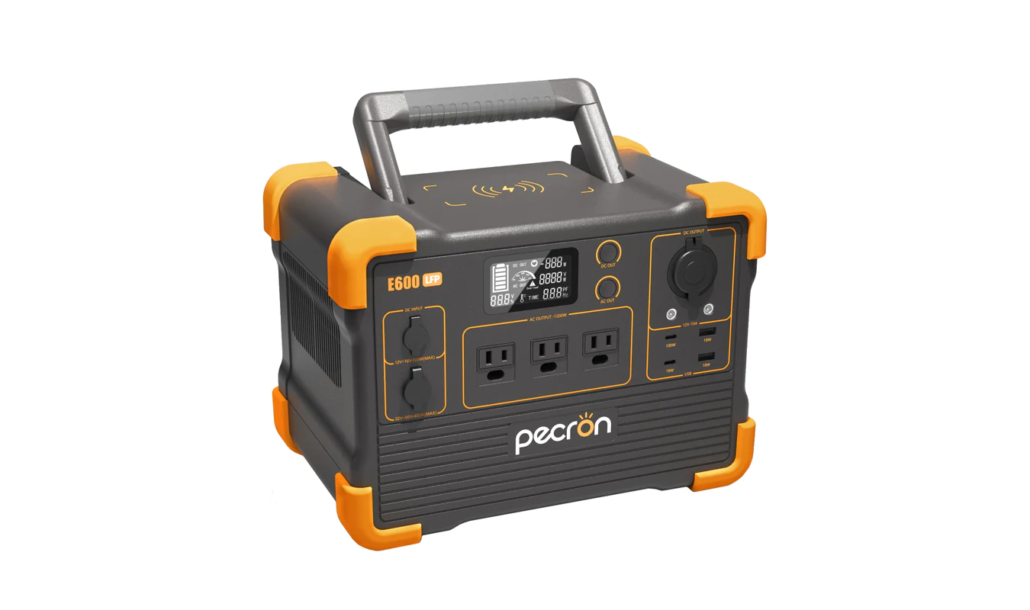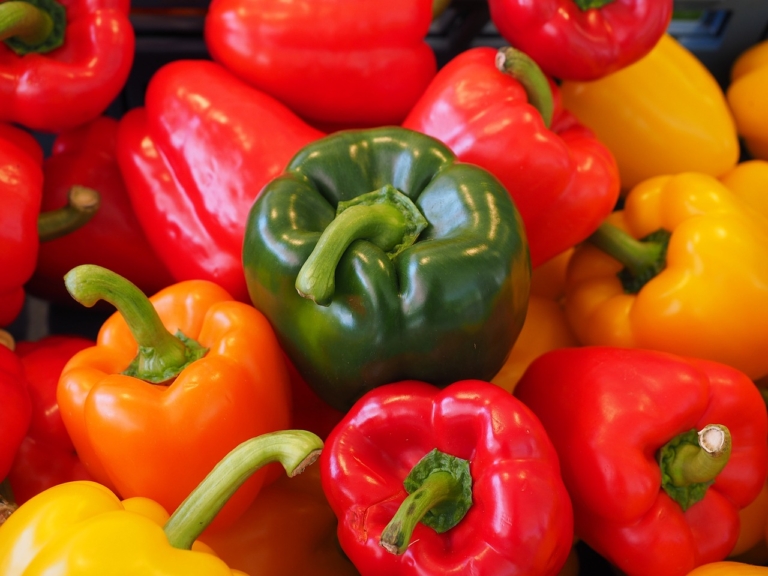Home Preparedness...Be Ready!
Home preparedness is the practice of being ready for any emergency or disaster in one’s home. The aim is to ensure the safety and well-being of oneself and family members. This involves having a plan in place for various scenarios, such as power outages, natural disasters, or medical emergencies.
It is essential to have emergency supplies such as non-perishable food, water, first-aid kit, flashlights, and batteries stored in a designated area. Home preparedness is crucial to ensuring the safety and security of oneself and family members and should not be overlooked.
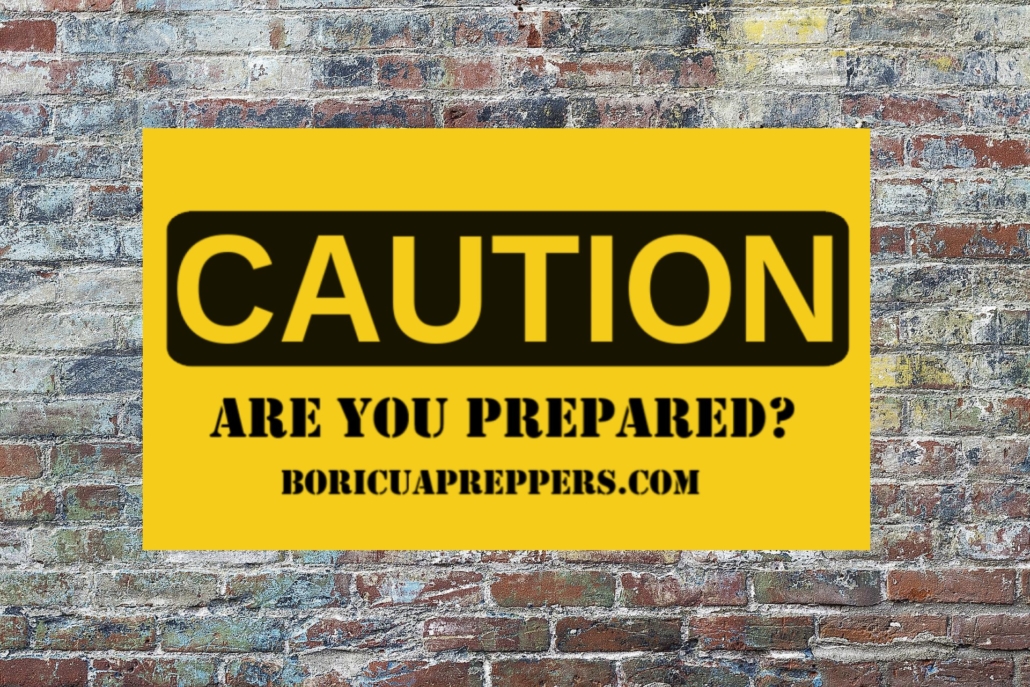
You Need A New Mindset
Setting your mind on prepared mode requires a shift in mindset towards proactivity and anticipation of potential challenges or opportunities. This can be done by cultivating awareness and mindfulness, regularly checking in with your goals and priorities, and staying updated with relevant information and trends.
It also involves building your skills and knowledge, seeking out resources and tools that can assist you in achieving your objectives and developing a flexible and adaptable approach to problem-solving and decision-making. By staying on top of things and being proactive, you’ll be better equipped to deal with the unexpected and make the most of any opportunities that come your way.
Ultimately, the prepared mindset is all about being ready and willing to take on whatever challenges and opportunities may lie ahead and having the confidence to do so effectively and efficiently.
The Necessary Skills
Home preparedness skills are critical in helping individuals cope with the unexpected. These skills encompass a broad range of techniques that enable individuals to anticipate and efficiently plan for potential disasters or emergencies that may arise in their homes or communities.
One of the most fundamental aspects of preparedness is having a well-stocked emergency bag or Bug-out bag. The Bug-out bag (BOB) should have non-perishable food, water, first aid supplies, medication, and hygiene items.
Additionally, basic survival skills are crucial, such as knowing how to start a fire, purify water, and navigate without technology, among others. It’s essential to learn other critical skills, such as shutting off utilities, securing the home against potential threats, and communicating with emergency services. When emergencies occur, being prepared saves lives and minimizes severe damage or loss. Educating family members on these skills is important, so that everyone can work together and support each other during a crisis.

Plan Ahead
Disasters can strike anytime, anywhere- often without warning. Therefore, being well-prepared to face any eventualities in your home can help you avert a potential disaster or, at the very least, minimize or contain its impact.
- It is imperative to create a disaster kit containing essential items such as water, non-perishable food, a first aid kit, flashlights, and batteries, among other things.
- In addition to having a disaster kit, make an evacuation plan with your family to ensure everyone knows what to do in case you need to leave home urgently. Be sure to map multiple evacuation routes and identify a meeting area for easy tracking.
- It is also crucial to store important documents such as passports, insurance policies, and medical records in a secure, easily accessible place.
- Regularly inspecting and maintaining your home’s safety features, including smoke detectors and fire extinguishers, can help mitigate potential risks.
- Lastly, consider investing in a backup generator or an alternative power source such as solar power for emergencies.
These five preparatory steps can help you feel more confident and ensure your family’s safety.
Stay Home Or Bug-out?
In times of emergency, it is important to have a clear understanding of the two primary approaches to consider. Firstly, staying at home or “sheltering in place” is best suited for disasters that are localized and don’t necessitate immediate evacuation. Even so, it requires a sufficient amount of resources, such as food, water, medication, and first aid supplies, to last until the disaster passes. Additionally, one needs to have basic communication means, such as radios or cell phones. This approach provides a sense of security, familiar surroundings, and access to resources in times of urgent need.
Secondly, bug-out or evacuation is the recommended approach when immediate evacuation is necessary, such as with hurricanes, wildfires, or floods. And when evacuating, it is important to have a pre-established plan, packed emergency kits, and supplies. Timing is crucial, and one should evacuate as early as possible to avoid traffic congestion. Identification of shelters prior to leaving is also fundamental. In any case, always stay informed and plan ahead for disasters.
Look For The Warnings
Home preparedness is a crucial aspect of staying safe and secure, and it is important to pay careful attention to the warnings provided during this time. To ensure the safety of yourself and your loved ones, it is essential that you follow all instructions and guidance provided by official sources such as government agencies or emergency services. Remember that ignoring these important warnings could potentially put your life or the lives of others at risk.
Another crucial aspect of home preparedness is to regularly check and maintain any emergency supplies or equipment that you have in your home. This includes everything from batteries and flashlights, to first aid kits and other essential items. By taking the time to check and maintain these items, you can help ensure that they are in good working order when needed.
Be aware of any potential hazards in your home, such as gas leaks or electrical faults, and take measures to address them as soon as possible. This could involve contacting a qualified professional to conduct an inspection and make any necessary repairs.
Finally, it is essential that you have a clear evacuation plan in place and that you practice it regularly with your family or household members. This will ensure that everyone knows what to do in the event of an emergency and can help minimize the risk of injury or other adverse outcomes.
Trust Your Skills And Be Calm
During a critical moment, individuals may find themselves in the midst of confusion and commotion. It can be challenging to keep your bearings and react accordingly. However, it is crucial to remember that maintaining composure is vital. By staying calm, you can better trust your instincts and skills to guide you out of harm’s way.
You can also refer to any training or preparedness plans you may have in place to navigate the situation effectively. Remembering the fallout of your decisions may affect those around you is crucial. That’s why it’s highly recommended to take a few deep breaths and remain composed.
It’s okay to ask for help. Emergency personnel or individuals with relevant experience are readily available to offer assistance. Having faith in your capabilities and remaining level-headed can make a massive difference if you find yourself amid a crisis.
Be Humble And Learn From Past Mistakes
Home preparedness is an important aspect that should not be taken lightly. Making mistakes can be costly and affect the security of your family. However, by learning from past mistakes, you can ensure that you are better prepared to handle any situation that may arise.
One way to go about it is by examining what went wrong in previous situations and figuring out how they could have been resolved differently. Did you run out of supplies, or did the communication among family members break down?
Once you identify these areas, you can create a well-thought-out plan to address them. This may include buying more supplies, starting a family communication plan, or investing in home security measures. Conducting regular practice drills could go a long way in helping everyone know what to do in an emergency.
By learning from past mistakes and enhancing your home preparedness measures, you can guarantee the safety and well-being of your loved ones, even amid a crisis.
Always Prepared!
The Basics
Bug-out bags, also known as BOBs, are emergency preparedness kits designed to help individuals and families survive during a crisis situation. They are typically backpacks or duffel bags that contain essential items like food, water, shelter, first-aid supplies, tools, and clothing. The purpose of a bug-out bag is to provide individuals with everything they need to survive for at least 72 hours in case they have to evacuate their homes due to natural disasters, civil unrest, or other emergencies.
Some of the important factors to consider when building a bug-out bag include the size and weight of the bag, the climate and terrain of the area, the number and ages of the people who will be using the bag, and the specific needs and preferences of each individual. It is important to regularly evaluate and update the contents of a bug-out bag to ensure that all items are in good condition and up-to-date.

Why Only 72 Hours?
Bug-out bags are recommended for 72 hours because they are designed to provide you with the essentials that you need to survive during an emergency or disaster situation. The first 72 hours of an emergency are often the most critical and can be the difference between life and death. This timeframe also allows emergency responders to reach you and for the initial chaos to calm down. Having a bug-out bag and being prepared means you won’t have to rely on assistance from others and can take care of yourself and your loved ones until help arrives.
What Is The Recommended Size And Weight For My Bug-Out Bag?
Bug-out bags should ideally weigh between 15 and 25 pounds, depending on the individual’s physical capabilities. A well-packed bag should contain essential survival items and tools for defense and navigation.
The bag size should suit the situation and the individual carrying it. A proper bug-out bag should be large enough to carry all necessary survival gear and food yet not too bulky to slow down the carrier. Most bags range from 20 to 50 liters in size, depending on the person’s level of fitness and the planned duration of the emergency.
Lightweight materials (such as nylon) are preferable to heavy materials (such as canvas), and the bag should have multiple compartments for easy organization. Additional features such as hydration bladder compatibility, MOLLE (modular lightweight load-carrying equipment) webbing, and sturdy construction are also beneficial. Ultimately, the size and features of the bag should be chosen based on the individual’s needs and situation, considering the climate and the expected duration of the stay away from civilization.
A smaller and more compact bag is ideal for shorter trips or emergency situations where mobility and agility are necessary. On the other hand, a larger bag offers more storage space but is less mobile and can become cumbersome, especially in challenging terrains or long journeys.
In summary, the recommended size and weight for bug-out bags are determined by individual needs, level of physical fitness, environmental factors, and duration of stay.
15 Essential Items For Your Bug-Out Bag
The Backpack
Food
When it comes to packing food for a bug-out bag, it’s important to select items that are lightweight, non-perishable, and high in calories.
Some good options to consider include energy bars, protein bars, trail mix, beef jerky, peanut butter, crackers, and canned foods like tuna, chicken, and beans. Have some instant coffee or tea to provide a caffeine boost.
Ultimately, the specific items you choose will depend on your personal preferences and any dietary restrictions you may have. Remember to rotate your stock periodically to ensure the food remains fresh and safe to eat.
Water
Water is essential for survival and is a crucial consideration for any bug-out bag. It’s recommended to pack at least 2 liters of water per person per day. However, this much water might not be possible to carry, so alternative water sources should be considered. Water purification tablets, filters, and water bottles with built-in filters are great options to treat water found in nature.
Other ways to collect water are relying on rainwater, dew collection, or digging for water in dry riverbeds. A small metal container to boil water is also an essential item to have in your bug-out bag. Additionally, you can also store collapsible water storage bags for emergency situations. Regardless of the method used, ensuring access to clean drinking water should be at the top of your list when preparing your bug-out bag.
Don’t forget a water canteen is an essential item to include in a bug-out bag because it allows you to carry a supply of clean water for drinking and cooking. When choosing a water canteen, look for one made of durable and lightweight material, such as stainless steel or BPA-free plastic.
Cooking Gear
When it comes to packing cooking gear for your bug out bag, there are a few key items that are essential. First and foremost, you’ll need a portable stove. Look for a lightweight option that runs on small fuel canisters, such as a backpacking stove or a camping stove. Make sure to pack extra fuel canisters as well.
In addition to the stove, you’ll need a pot and pan for cooking food and boiling water. Look for options that are lightweight and compact, such as collapsible silicone pots and pans.
Other useful items to pack include a set of utensils (fork, spoon, and knife), a can opener, a portable water filter, and a dish towel or sponge for cleaning.
When packing your cooking gear, make sure to keep the weight and size of each item in mind. You’ll want to minimize the overall weight of your bug out bag, so prioritize compact and lightweight options.
Shelter
When it comes to creating a bug-out bag, one of the most important items to include is shelter gear. This will ensure you are protected from the elements and able to get some much-needed rest when on the go. Some key items to consider include
- A lightweight and durable tent
- A waterproof tarp or poncho for extra protection
- A sleeping bag rated for your climate
- An emergency blanket for extra warmth
- A high-quality sleeping pad to protect you from the ground
When choosing your shelter gear, make sure you consider the weight and size of each item, as you need to ensure it fits comfortably in your bug-out bag. Additionally, test your gear before packing it away so you know how to set everything up quickly and efficiently when the time comes.
Illumination Devices
Consider a headlamp or handheld flashlight, which provides hands-free operation and a brighter, more focused beam. Ensure your lighting tool is durable and weather-resistant. Look for options that use rechargeable batteries or have a long battery life to avoid the hassle of replacing batteries.
Ensure you carry extra batteries or a power bank if you need to recharge your lighting source. Don’t underestimate the value of small glow sticks or chemlights, as they can be useful for marking your campsite or signaling for help without draining precious battery power.
Lastly, if you live in an area known for intense weather conditions, consider investing in additional weather-resistant lighting options like waterproof flashlights or solar-powered lanterns.
It’s essential to have reliable fire-making tools in your kit. At a minimum, you’ll want to carry high-quality lighter or waterproof matches, a magnesium fire starter, and a few spare lighters or matches in case of emergencies.
Other fire-making tools that you may want to consider adding include a fire piston, charcloth, flint, and steel, and a small pocket stove with fuel tablets. It’s also wise to pack some dry tinder material, such as cotton balls, wood shavings, or dryer lint, in a waterproof container.
When selecting fire-making tools for your bug out bag, prioritize lightweight, durable options that are easy to use and carry. Practice using your tools before relying on them in the field, and store them in a dry, secure location within your kit.
Navigational Items
When preparing a bug-out bag, it’s important to include navigational items to help you find your way to safety. A map and compass should be at the top of your list. Make sure you have a detailed topographical map of the area you will be traveling through, and don’t forget to bring a small binocular.
A GPS device can also be useful, but bring extra batteries and learn how to use it beforehand. Marking your route and important landmarks with bright tape or flags can help you stay on track. A whistle and signal mirror can communicate with rescue teams or others in your group.
Finally, don’t forget to pack a reliable headlamp or flashlight with extra batteries, especially if you will be traveling at night. With these navigational items in your bug-out bag, you’ll be better equipped to find your way to safety in a crisis situation.
First-Aid Kit
A first aid kit and a trauma kit are essential components of a bug out bag, as natural disasters, accidents, and other emergency situations can quickly turn dangerous and potentially life-threatening without proper medical care. A first aid kit should contain basic items such as band-aids, gauze, disinfectant, and painkillers.
Meanwhile, a trauma kit should include supplies such as tourniquets, pressure dressings, hemostatic agents, and chest seals, as these items can help stabilize someone experiencing severe bleeding or other serious injuries.
It’s important to remember that both of these kits should be tailored to your personal health needs and the environment in which you will be using them. Regularly check and maintain your kits, and consider taking a first aid or wilderness medicine course to learn how to use their contents effectively.
Communication Devices
In a bug-out bag, communication devices should be considered crucial items to include. Some important communication devices to consider adding to your bag include:
- A portable AM/FM radio to stay up-to-date on important news and alerts
- A two-way radio to communicate with others in your group
- A satellite phone for more reliable communication in remote areas.
Additionally, consider adding a whistle, signal mirror, or flare to attract attention for rescue services. It is also a good idea to have a fully charged power bank to keep your devices running in case of extended time without power. Make sure to consider the weight and size of communication devices when adding them to your bug-out bag so they don’t become too heavy or bulky to carry.
Working Tools
One of the most important components of a bug-out bag is working tools that can be used for survival in various situations. Some of the essential working tools for a bug-out bag include:
- A multi-tool knife
- A survival hatchet
- Durable cordage
- High-quality gloves
- A saw
- And a shovel
These tools can help with shelter building, food gathering and preparation, and water procurement. When selecting working tools for a bug-out bag, it is essential to assess personal needs and skills. The chosen tools should be dependable, lightweight, and easy to carry, making them ideal for emergency situations. Having well-chosen tools in a bug-out bag can make all the difference in ensuring preparedness and survival in an emergency.
Hygiene
Hygiene is an important consideration for any bug-out bag, as it can help prevent illness and maintain morale. Basic hygiene items should include:
- Toothpaste,
- A toothbrush,
- Soap,
- Shampoo,
- A comb
- Wet wipes or toilet tissues
- Hand sanitizers
- A pack of tissues
- A small bottle of insect repellent
- Sunscreen protects against harmful UV rays
- A small towel or washcloth,
- Menstrual hygiene products for women.
By including these essential hygiene items, you can help ensure that you and your fellow travelers stay healthy and comfortable during a bug-out situation.
Self Defense
When preparing a bug-out bag, it’s important to include defense gear to protect yourself and your family in an emergency. Here are some suggestions for defense gear:
- A tactical pen
- Pepper spray
- Stun gun
- A firearm (if legal in your area and you are trained to use it).
Remember to only use these items for self-defense in a lawful manner. It’s also important to practice operating these tools for familiarity and safety.
Survival Knife
A survival knife is an important tool in any bug-out bag. It can be used for various tasks such as cutting wood, preparing food, building shelter, and defending yourself. When choosing a survival knife, there are several factors to consider.
The blade should be made of high-quality steel that can hold an edge and resist rust and corrosion. The blade should also be thick enough to withstand heavy use without breaking. A full tang construction is also important to provide strength and balance. Other factors include blade length, handle material, and blade shape. It is important to choose a knife that fits comfortably in your hand and comes with a durable sheath for safe storage.
Remember, a survival knife is only effective if you know how to use it properly, so take the time to learn basic knife skills and techniques.
Clothing
When considering clothing for your bug out bag, it is important to prioritize function and durability. Choose clothes that are versatile and can be layered in order to adjust to changing weather conditions. Convertible pants that can be turned into shorts are ideal for the flexibility they provide. Look for clothes that are moisture-wicking and quick-drying, as well as breathable fabrics to prevent overheating.
Additionally, sturdy boots with good ankle support are crucial for walking long distances or navigating unpredictable terrain. A hat to protect from the sun and a lightweight rain jacket are also essential. Avoid cotton clothing, as it is not moisture-wicking and can retain water, leading to discomfort and potential health risks.
Finally, consider packing specialized items such as thermal clothing, gloves, and a balaclava for extreme cold weather conditions. Remember to pack clothes that are comfortable, functional, and versatile to ensure that you can effectively handle whatever emergency situation comes your way.
In Conclusion...
In conclusion, a bug-out bag is an essential item in case of emergencies or crises that may require you to leave your home quickly. It should contain enough supplies to last for at least 72 hours, including food, water, shelter, clothing, a first aid kit, important documents, and cash. However, it’s important to remember that the contents of a bug-out bag may vary based on individual needs, location, and type of emergency.
It’s also important to regularly update and maintain your bug-out bag to ensure that its contents are still usable and relevant. Ultimately, being prepared and having a bug-out bag can provide peace of mind and increase your chances of survival in an emergency situation.
Always Prepared!
Canned Food For Survival
Canned food is an excellent choice for emergency and survival situations, such as natural disasters or power outages, where fresh food may not be readily available. These foods are often high in nutrients and have a long shelf life, decreasing the risk of spoilage. They are also easy to store and transport, making them a convenient option for survival needs.
When selecting canned foods, it is essential to choose those with high-quality ingredients that are low in sodium and added sugars. Some of the best options include protein sources such as canned fish, meat, and beans, as well as fruits and vegetables. Proper storage and rotation of canned foods are crucial to ensuring they stay fresh and edible for long periods. Canned food can be an excellent addition to your survival kit and can provide sustenance and energy during challenging times.
Shelf Life For Canned Food
Canned food can last for a very long time if stored properly, but it does have a shelf life. Most canned goods have an average shelf life of 2-5 years from the date of purchase, but this can vary depending on the type of food and storage conditions.
Some canned food can last up to 10 years (I would only recommend this for an emergency situation) if stored properly. This is due to the canning process, which involves sealing the food in an airtight container and heating it to high temperatures, killing off bacteria and other harmful microorganisms that could spoil the food. However, it is important to note that not all canned foods last the same amount of time, as some are more prone to degradation than others.
High-acid foods such as tomato sauce and fruits tend to have a shorter shelf life than low-acid foods like canned meats. It’s important to check the expiration date before consuming any canned goods, and to properly store them in a cool, dry place away from direct sunlight and heat sources. Bulging, rusted, or dented cans should be thrown away as they may contain dangerous bacteria. Always use common sense and trust your instincts when it comes to consuming canned food that has been stored for a long period of time.
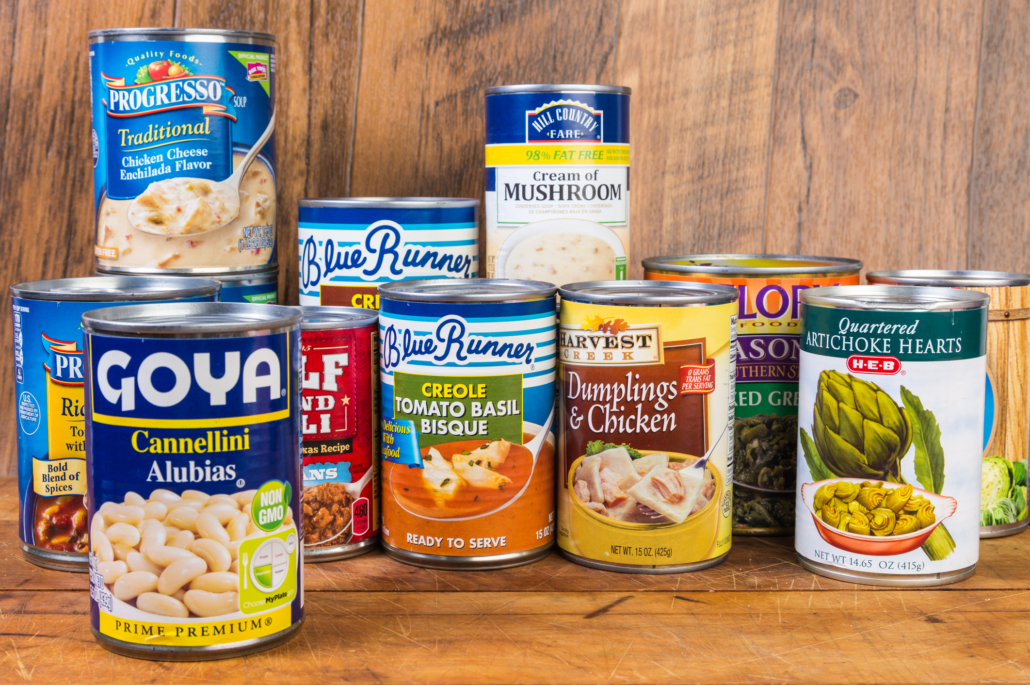
Always Choose Canned Food With High Proteins First
When it comes to a survival situation, it is essential to choose canned foods that are high in proteins first. Proteins are essential for the body, as they help in building and repairing tissues, boosting the immune system, and providing energy. Canned foods, such as tuna, salmon, chicken, and beans are great sources of protein and can help keep you energized and functioning well during a crisis.
It is also advisable to pair canned foods with other sources of nutrition, such as fruits, vegetables, and grains, to ensure a balanced diet. With a well-stocked supply of canned foods with high proteins, you increase your chances of survival in an emergency situation.
Here Are Some Of The Best Options Of Canned Food For Survival
Meat
Canned meat can be a valuable addition to a survival kit or pantry due to its long shelf life and ease of storage. It is a good source of protein and can be consumed straight from the can or cooked in various recipes, such as fried rice, omelets, sandwiches, and casseroles. It can also be diced and added to soups and stews for a protein boost.
- Spam
- Chunk Chicken or Turkey
- Roast Beef
- Corned Beef or Corned Beef Hash
- Vienna Sausages
- Diced Ham
- Beef Stew
- Pulled Pork
Fish

Canned fish is a great option for survival, as it provides a convenient source of protein and other essential nutrients. Fish such as tuna, salmon, and sardines are popular for canned fish products, as they are high in omega-3 fatty acids, which are important for heart and brain health.
- Tuna
- Mackerel
- Salmon
- Sardines
Beans
Canned beans are a great option for survival situations because they are shelf-stable and packed with nutrients. Whether preparing for a natural disaster or adding emergency supplies to your pantry, canned beans are a reliable source of protein and carbohydrates that can help sustain your energy levels.
Some benefits of canned beans for survival include their long shelf life, affordability, and versatility in preparing different meals. You can add them to soups, stews, or chili, or simply heat them and serve them as a side dish.
Canned beans also offer many health benefits, including lowered cholesterol levels, improved digestion, and reduced risk of chronic diseases like heart disease and type 2 diabetes.
- Red, Black, Pink, White, and all the other colored bean.
- Garbanzo or chickpeas
- Black eyes peas
- Seasoned butter beans
Vegetables
Canned vegetables are convenient, have a long shelf life, and require minimal preparation. They can provide important nutrients like vitamins, fiber, and minerals that may be lacking in other survival foods.
It’s important to choose a variety of canned vegetables to ensure a balanced diet. Look for options without added salt or sugar to avoid excess sodium or calories.
- Corn
- Carrots
- Green beans
- Potatoes
- Sweet peas

Canned Meals
Canned meals can be good options for survival since they have a long shelf life, making them ideal for stocking up in advance. Soups are usually packed with nutrients and can provide a decent amount of calories, making them a good option for a quick, easy, and satisfying meal.
Most canned pasta products are also easy to prepare and can keep you full for a while. However, these options are often high in sodium and may not be the healthiest choice for a long-term diet. It’s important to balance canned foods with fresh fruits and vegetables and other non-perishable foods, such as nuts and seeds, to ensure that you are getting a variety of nutrients. In conclusion, canned meals are viable choices in emergency situations but not ideal for long-term survival.
- Soup
- Chili
- Spaghetti-os
- Ravioli
- Beef Stew
Canned Food For Bartering
During a survival situation, canned food can become a valuable item for bartering. In a crisis, basic food supplies can quickly become scarce, and people will be willing to trade nearly anything for a good meal. Having a stash of canned goods can give you leverage and bargaining power to trade for other necessary items, such as weapons, medicine and equipment. Canned food can be an excellent bartering item during a survival crisis, giving you access to the essential goods and services that you need to survive.
In Conclusion...
In conclusion, canned food can be a valuable resource for survival situations. With a long shelf life and ability to provide necessary nutrients, canned goods are a reliable source of sustenance. However, it is important to ensure that the canned goods are properly stored and checked for signs of spoilage before consumption. Additionally, it is recommended to have a varied selection of canned foods to prevent boredom and to provide a balanced diet. While canned food may not be the most appetizing option, it can be a crucial component to surviving in emergency situations.
Lorem ipsum dolor sit amet, consectetur adipiscing elit. Ut elit tellus, luctus nec ullamcorper mattis, pulvinar dapibus leo.
Introduction To Portable Power Stations
Portable power stations are portable devices that can store and convert electrical energy, making them ideal for use while traveling or in remote locations. These stations can come in various sizes, from small devices that can charge a phone or laptop to larger systems that can power small appliances.
They typically rely on rechargeable lithium-ion batteries that can be charged through an AC wall outlet, carport, or solar panels. Some portable power stations are also designed to function as generators, storing energy from sources such as solar panels or wind turbines and then converting that energy into usable power.
Portable power stations are becoming more popular as people seek to reduce their reliance on the electrical grid and increase their independence. They also offer a convenient, reliable, and environmentally friendly way to power devices and appliances while traveling or in remote areas.
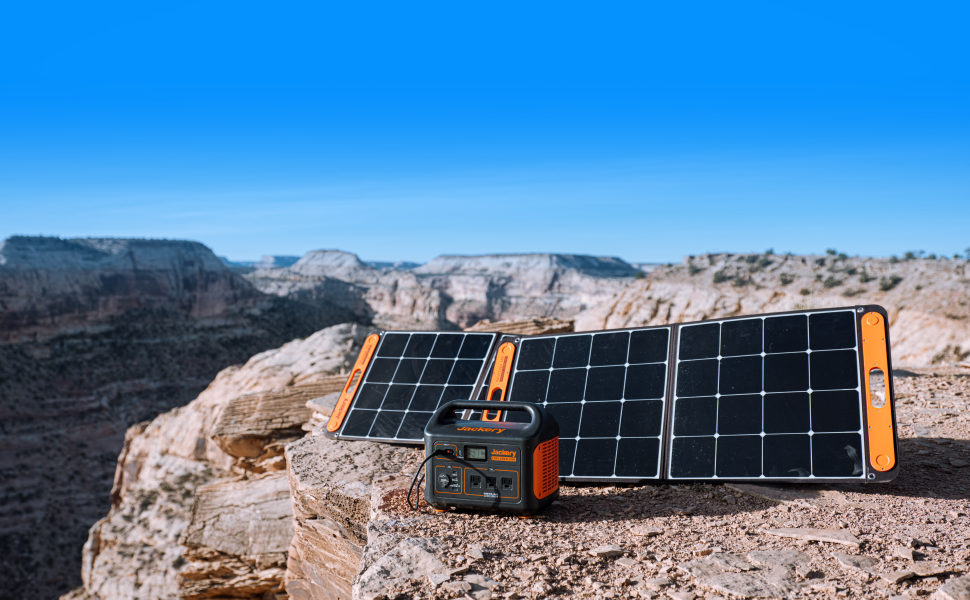
What Should Be Consider When Buying A Portable Power Station
A portable power station is a device that can provide electrical power when you’re away from a power source. When purchasing a portable power station, one should look first for its battery capacity and power output. The battery capacity determines how often and how long you can use your devices before the power station needs to be recharged. The power output determines how many devices and what type of devices you can power.
Next, you should consider the power station’s number and type of ports (USB, AC, DC) and whether they are compatible with your devices. Additionally, one should consider the weight and size of the power station, as well as its durability and ease of use.
Finally, one should consider the charging time of the power station and the types of charging methods available (solar, AC, DC). By keeping these features in mind, you can find a portable power station that meets your specific needs and requirements.
Battery Capacity And Power Output
The battery capacity of a portable power station is a crucial feature that determines how long it can power your devices. The battery capacity is typically measured in watt-hours (Wh).
A higher watt-hour rating means the battery can hold more energy and provide power for a longer time. Portable power stations generally range from 150Wh to 1000Wh capacity, depending on the intended usage and the price range.
For example, a 300Wh power station can charge a smartphone for up to 20 times, a laptop for up to 5 times, or power a mini-fridge for up to 6 hours. Meanwhile, a 1000Wh model has enough capacity to run a standard refrigerator for a day or keep a power tool running on a construction site.
When choosing a portable power station, it is essential to consider your planned usage and the battery capacity required.
Type Of Ports
Portable power stations typically come equipped with various types of ports to accommodate different types of devices and appliances. These ports can include USB ports for charging mobile phones or tablets, AC outlets for powering small appliances or laptops, and DC ports for running devices that require a direct power source, such as car refrigerators or air compressors.
Some models also offer USB-C ports or wireless charging capabilities. Additionally, many portable power stations have built-in surge protection to safeguard devices against potential electrical damage. When selecting a portable power station, it is important to consider the types and number of ports needed for your intended use, as well as the capacity and charging time of the unit itself.
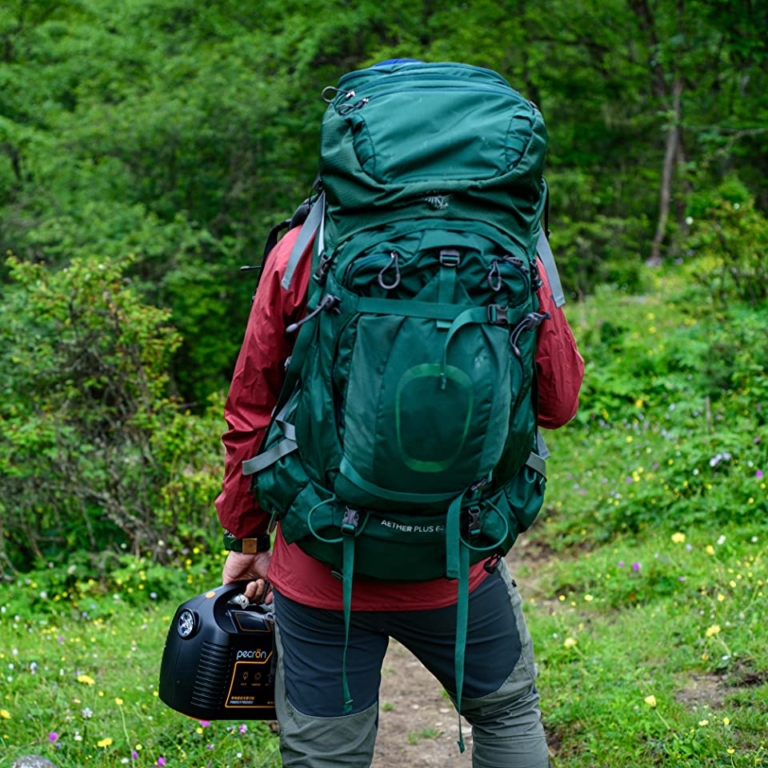
Weight And Size
Portable power stations come in a variety of sizes and weights, depending on their capacity and intended use. Generally, they are designed to be easily transportable, so they tend to weigh between 5 and 50 lbs. Some smaller models may weigh as little as 3 lbs, making them ideal for hiking or camping trips. Larger models may be closer to 100 lbs or more and are better suited for RV or home use.
Lithium-ion batteries are commonly used in portable power stations because they are lightweight and offer high energy density. When choosing a portable power station, it’s important to consider how much weight you’re willing to carry, as well as the device’s capacity and features. The weight of the power station can also affect its portability and ease of use.
Durability
Portable power stations are designed to offer a reliable and convenient power source for outdoor activities, emergencies, and other situations where grid power is unavailable. One of the important considerations when choosing a portable power station is its durability.
Portable power stations are typically built with durable materials such as metal or rugged plastic to ensure they can withstand regular use and outdoor conditions. They also feature reinforced edges and corners to protect against accidental drops or impacts.
Additionally, many portable power stations are equipped with safeguards such as overvoltage protection, short-circuit protection, and overcurrent protection that help prevent damaging electrical surges. These features help ensure the longevity of the device and protect against potential malfunctions that could cause damage or injury.
Overall, investing in a high-quality portable power station with a sturdy build and safety features can ensure that you have a reliable power source for years to come.
Charging The Portable Power Station
A portable power station is a convenient way to keep your devices charged when you’re on the go. There are several ways to charge your power station. The first and most common way is to plug it into a wall outlet using the included AC adapter. This allows you to fully charge the power station in a few hours, depending on the capacity of the battery.
Another way to charge your power station is to plug it into a 12V DC outlet in your car. This is a great option for camping trips or road trips when you may not have access to a wall outlet.
Finally, many portable power stations also have the option of using solar panels to recharge the battery. This is a great option for outdoor enthusiasts or people who want to reduce their carbon footprint. Solar panels can be connected to the power station using the included charging cable, and can fully recharge the battery in a few hours if conditions are optimal.
Using Solar Panels
To use solar panels for portable power stations, you need to follow these steps:
1. Choose the right portable power station that can handle the wattage of your solar panel. Look for products that feature built-in solar charging, like Goal Zero or Jackery.
2. Buy a solar panel that’s compatible with your power station. It should be efficient, durable, and portable. Look for the maximum power point tracking (MPPT) charge controller as these are the most efficient.
3. Connect the solar panel to the power station. This can be done through either an Anderson Powerpole or MC4 cable. Ensure that you have the correct cable for your specific power station.
4. Place the solar panel in an optimal location. It should be placed in direct sunlight and at an angle that maximizes its exposure to the sun.
5. Check the charging progress of your portable power station regularly. When it’s fully charged, you can use it to power your devices anytime, anywhere.
Safety Features
Portable power stations are a great option for outdoor enthusiasts, emergency preparedness, and remote job sites. However, it is important to take safety features into consideration when choosing a portable power station. Some important safety features to look for include:
1. Overcharge protection: This feature prevents the battery from being overcharged, which can lead to a fire or explosion.
2. Short circuit protection: This feature protects the power station from damage if there is a short circuit in the system.
3. Over-discharge protection: This feature prevents the battery from being discharged too low, which can damage the battery and reduce its lifespan.
4. Overload protection: This feature prevents the power station from being overloaded, which can damage the device or cause a fire.
5. Temperature control: This feature monitors the temperature of the battery and shuts off the charging process if it gets too hot.
By choosing a portable power station with these safety features, you can ensure that you have a reliable and safe power source for your outdoor adventures or emergency situations.
It's Time To Get Yours
Overall, portable power stations are an excellent investment for those who need access to reliable power when on the move. They are environmentally friendly, cost-effective, and provide peace of mind in emergency situations.
Delicious Peppers!
Peppers are a great option for anyone looking to start a garden this summer. Not only are they relatively easy to grow, but they are also very versatile and can be used in a variety of dishes. There are many different types of peppers to choose from, including sweet bell peppers, spicy jalapenos, and even exotic varieties like habaneros and ghost peppers. Peppers also have some health benefits, as they are good sources of vitamins and antioxidants. They can be grown in containers or in a traditional garden bed, making them a great choice for people with limited space or those who live in urban settings. Overall, peppers are a low-maintenance crop that can add flavor and nutrition to your meals all summer long.
Cultivating Your Pepper Plants
Plants should be started from seed (using Seed Starter Trays) two to three months before the last day of your spring frost if you want to cultivate unusual kinds, which include some of the best peppers. Start seeds indoors in a sunny, warm environment (about 85 degrees) with slightly wet soil. Before planting, pepper seedlings benefit from being moved into a bigger container. Before planting, gradually acclimate seedlings to outdoor conditions for about a week.
You have two options for getting pepper transplants: ordering them through the mail or visiting a garden center. However, it’s essential to be patient and avoid planting seedlings outside too soon after frost, as it could stunt their growth. If you have a short growing season, it’s best to plant them immediately. To thrive, peppers require abundant sunlight and a long growing season. If you live in colder climates, you can use row covers to warm up the plants and choose fast-maturing types with a “days to maturity” label. Although peppers can be grown anywhere, even in Alaska, they are perennial plants that you can pot and bring indoors during fall. They will survive the winter and sprout new leaves in the spring.
Fertilizing Your Pepper Plants
Plants should be buried in holes that are dug so they sit approximately an inch deeper than they did in their starter pots. But you can also grow your pepper plants in bigger containers (3-5 gallons); as a matter of fact, many pepper growers do. Plants should be spaced 1 1/2 to 3 feet apart, with 1 1/2 to 3 feet separating rows. Peppers do well in containers as long as they get enough sunlight. All types profit from consistently moist soil that has been improved by finished compost.
Some seed sellers advise applying an organic fertilizer with a high phosphorus concentration (fertilizers are labeled with their nitrogen, phosphorus, and potassium contents) when transplanting. Avoid fertilizing pepper plants with excessive nitrogen levels since this can lower yields.
A tablespoon of Epsom salts dissolved in a gallon of water should be sprayed on leaves every two weeks to aid with fruit set, especially if temperatures are high, suggested by professional pepper producers. Many pepper planter recommends using an organic fish emulsion spray to fertilize every other week (on weeks when Epsom salts are not used). The secret to outstanding hot peppers is calcium, which can be provided by incorporating bone meal into the soil every two weeks throughout the growing season.
All Efforts Paid Off - Harvesting Peppers
Peppers usually start off as green, though a few may be light purple or yellow. As they mature, they can turn white, yellow, orange, red, or even dark purple or black. Over time, they develop a variety of flavors and nutrients. While you can eat them at any stage, waiting to harvest them can save you money. If you want to harvest brilliant red peppers earlier in the growing season, consider growing bell pepper varieties like Lipstick and Gypsy that require fewer days to mature. Harvesting the first few fruits as soon as possible can stimulate greater output.
When selecting seeds from open-pollinated peppers (those that produce parent plants), choose the largest ones and let them air dry. Store the seeds in a dark, cool, dry location, such as in basement storage containers with lids or opaque seed packs. If you prefer, you can store them in the refrigerator, but be sure to seal them in a container to prevent humidity from spoiling them.
Hot And Sweet Peppers
Before planting, it’s important to decide which peppers you want to grow – sweet, hot, or a mix of both. Sweet peppers, such as bell, pimento, marconi, shishito, and habanada, come in various sizes and colors and are relatively easy to cultivate. On the other hand, hot peppers like jalapeno, cayenne, and habanero can range from mildly spicy to extremely hot.
The Fish pepper is an extraordinary plant with stunning green and white variegated leaves and fruits that boast “racing” stripes. African-American chefs from Philadelphia, Boston, and Washington, D.C., used this pepper variety in fish sauces during the late 1800s. Its unique characteristics make it one of the most remarkable pepper plants ever encountered.
If you’re looking for versatile peppers, Jalapenos are a great choice due to their thick flesh, making them perfect for stuffing, roasting, and grilling. For those who prefer a pepper that grows quickly, sweet Cubanelles are a good option. If you’re a fan of spicy peppers, you can’t go wrong with the Butch T. Trinidad Scorpion, which was declared the “Hottest Pepper in the World” as of June 4, 2011, with a Scoville heat rating of over 1,450,000.
On the other hand, White Habanero, Bolivian Rainbow, and Peter Pepper are lovely to admire for their beauty. For a delicious hot pepper to fry, the Italian Long Hot is a great choice that pairs well with sandwiches and pizza. Bolivian Rainbow and Peter Pepper are lovely to admire for their beauty. For a delicious hot pepper to fry, the Italian Long Hot is a great choice that pairs well with sandwiches and pizza.
After All, It's Done...
Growing peppers can be a fun and rewarding experience. As you watch your pepper plants grow from tiny seedlings to mature plants, you’ll be filled with a sense of satisfaction. But the real excitement comes when it’s time to harvest your peppers. Whether you’re growing mild bell peppers or spicy jalapeños, you’ll feel a sense of pride as you pluck each fruit from the plant. And the best part? You get to enjoy the fruits of your labor! Whether you’re using your harvested peppers in meals, preserving them for future use, or giving them away to family and friends, there’s something special about eating food you’ve grown yourself. So, whether you’re a seasoned gardener or a newbie, why not try growing some peppers this year? You’ll be glad you did!
